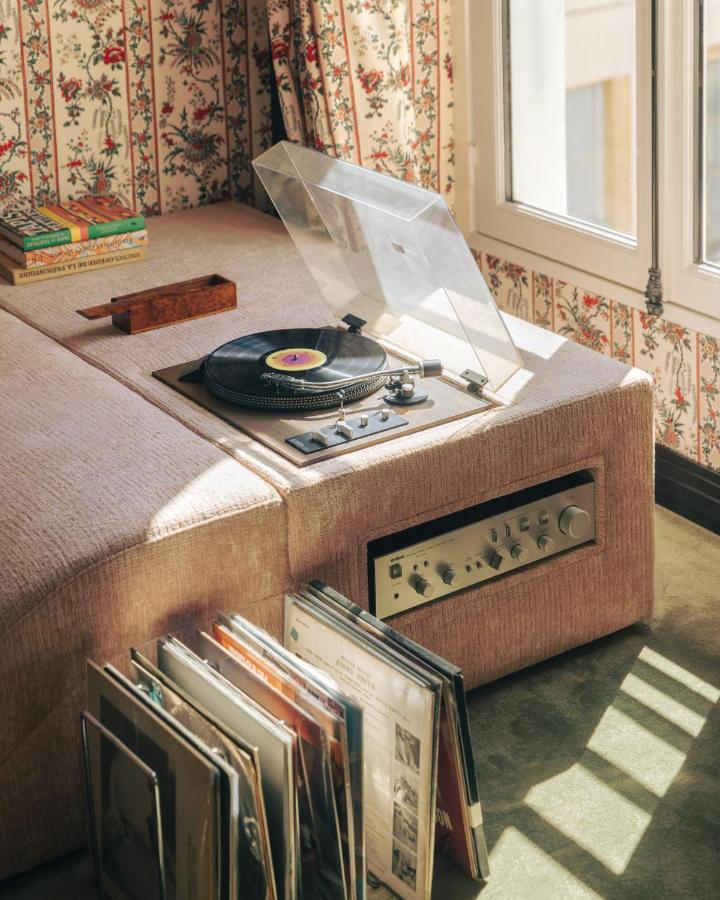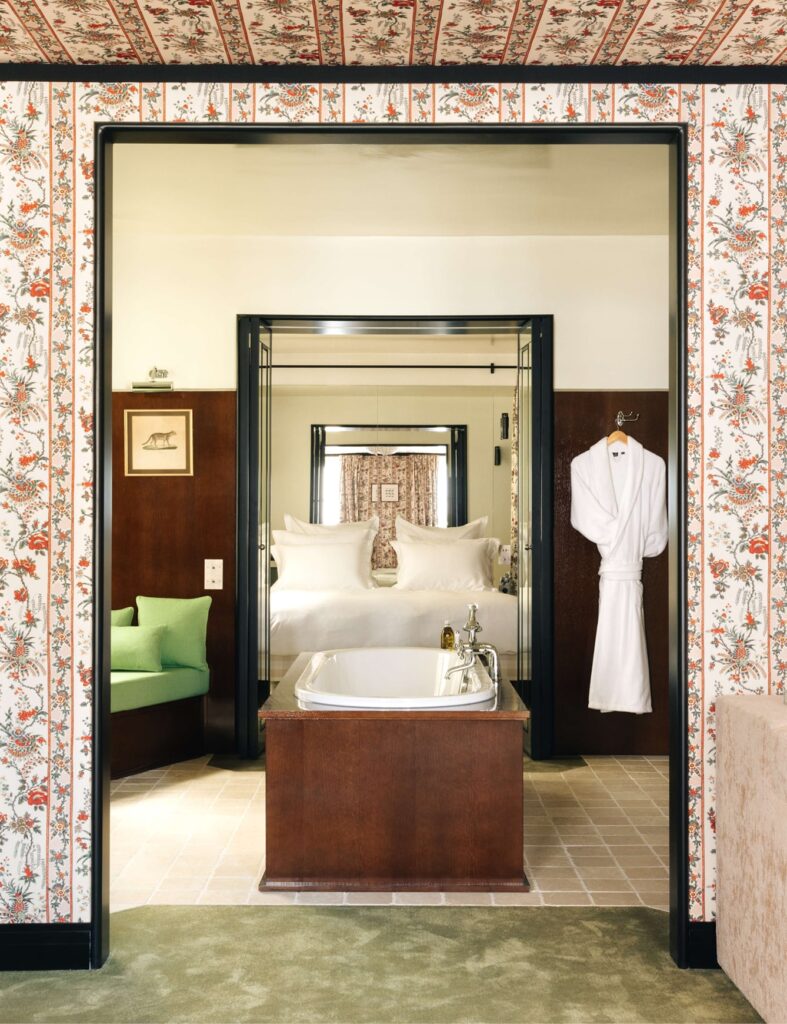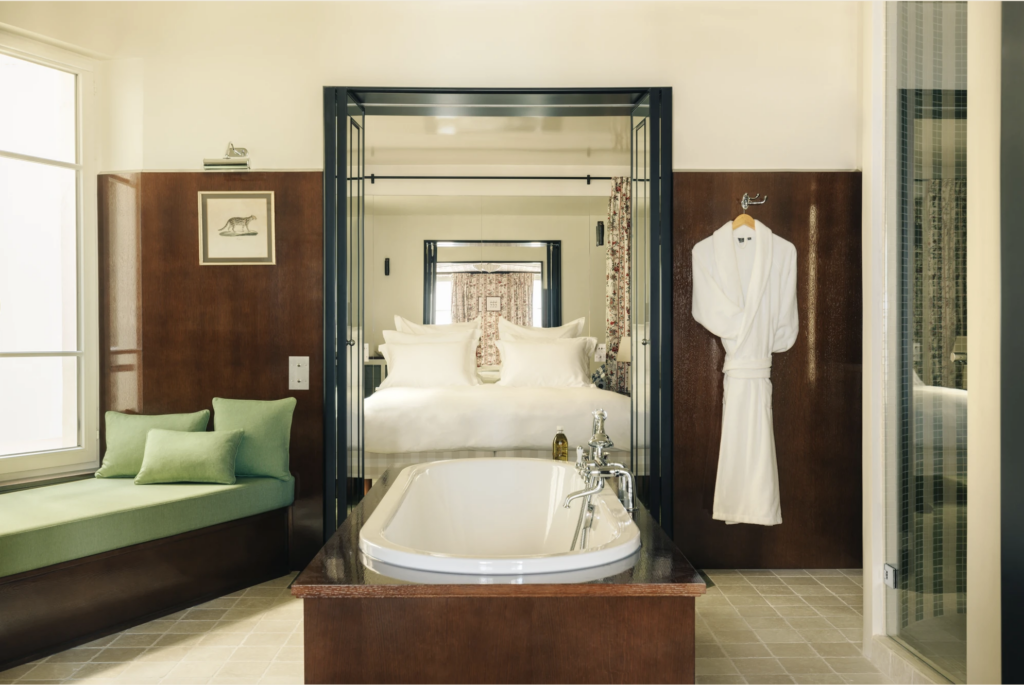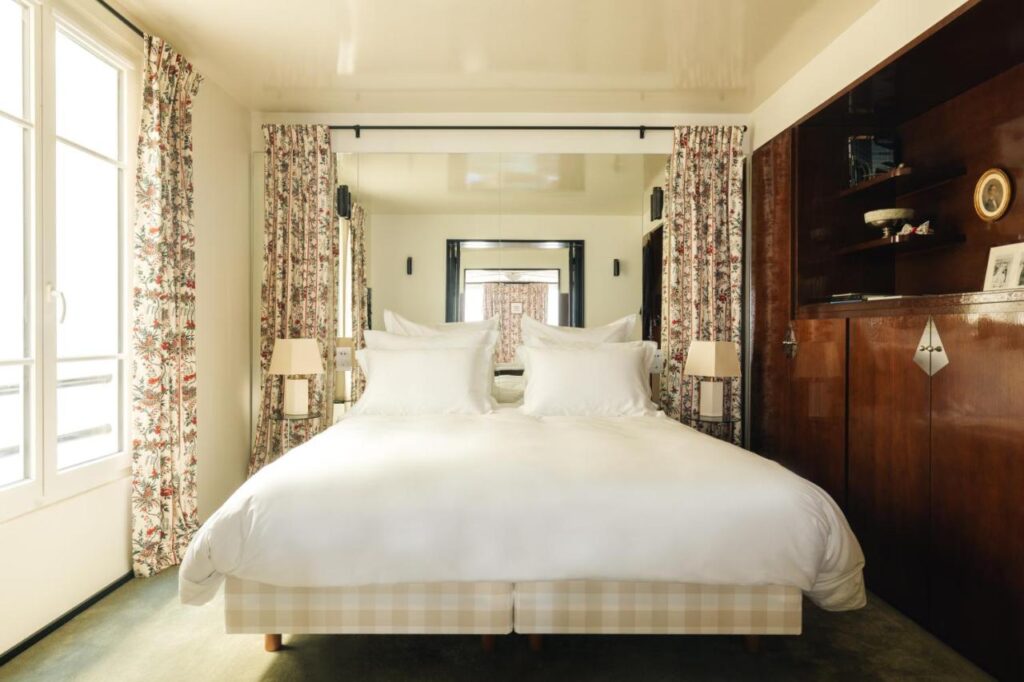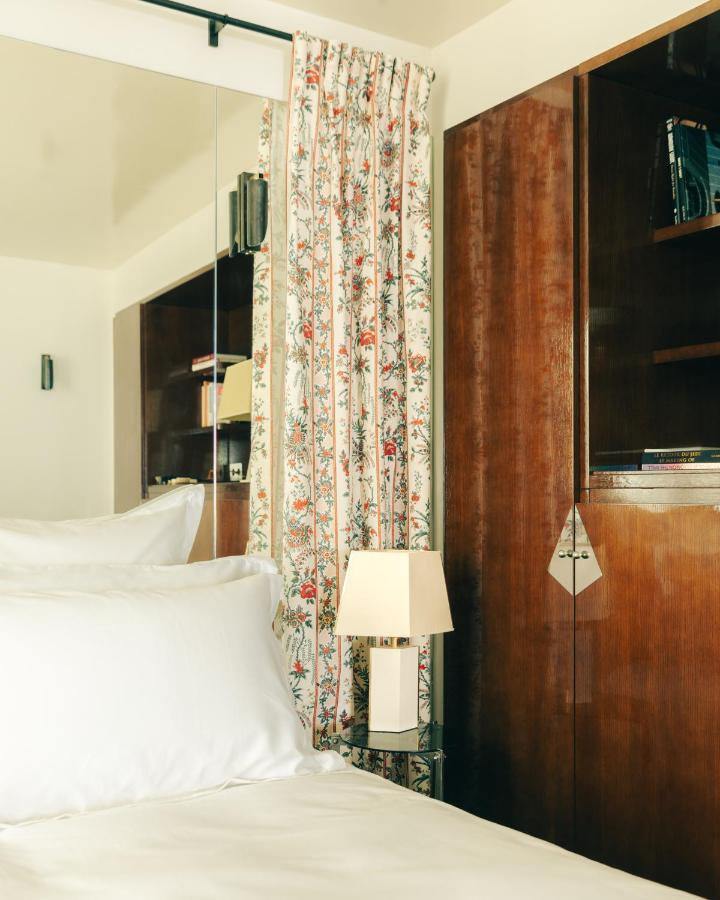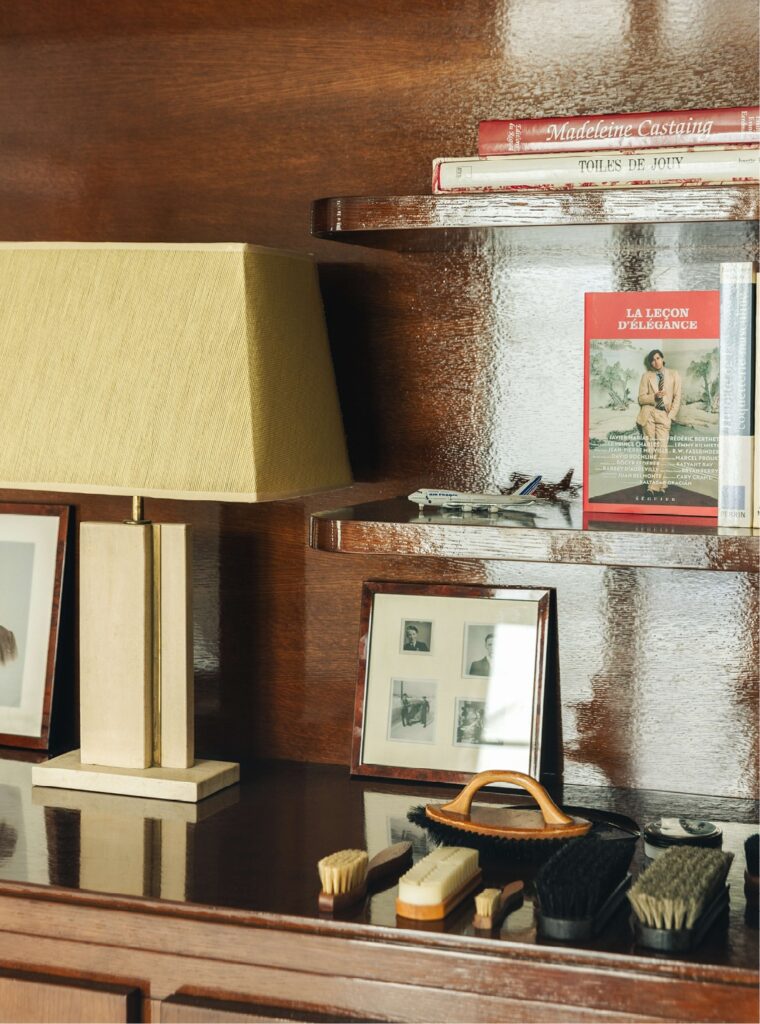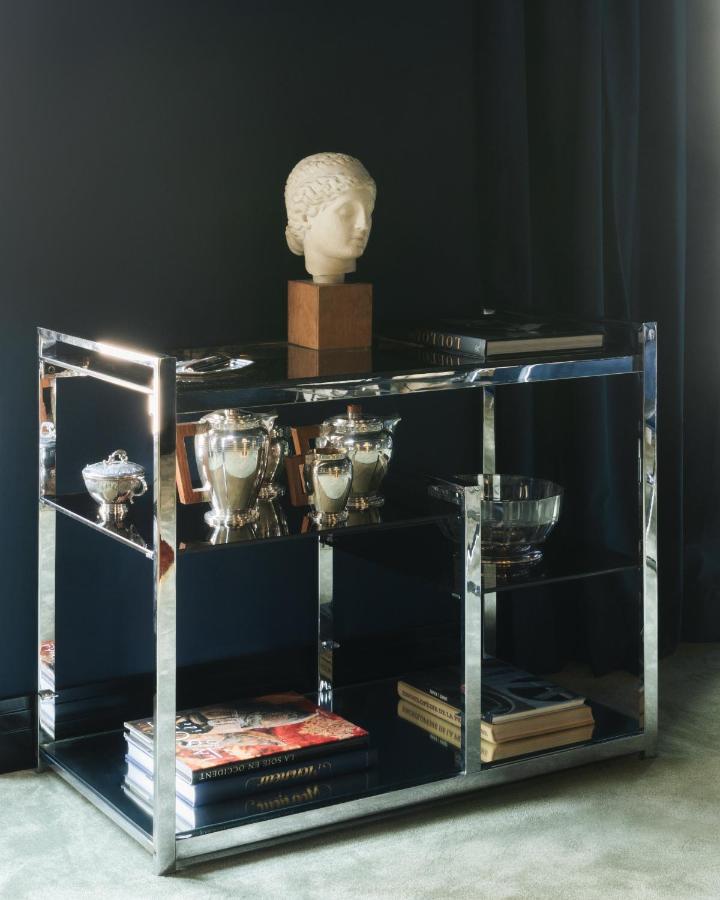Cinabre Les Suites: Suite No.2
by habituallychic
03 . 07 . 24
The Cinabre Shop and Les Suites in the 9th arrondissement in Paris have been on my radar for some time but when two influencers posted their stays during Paris Fashion Week, I realized I hadn’t seen a full look inside.
Cinabre was founded as a fashion company by Alexandre Chapellier in 2011 to make ties, scarves, dressing gowns, and other accessories “as an antidote to old-school luxury houses that take themselves too seriously”. In 2020, he bought the current building because he thought he had more to say. He Charlotte Albert and Alexis Lamesta of Necchi Architecture to design the store downstairs and two rentable suites upstairs.
Suite No.1 is neutral which you would assume might be my preference but you would assume wrong. I love Suite No.2, its Pierre Frey 18th-century fabric clad walls and pale green wall-to-wall carpet reminds me of a modern take on the secret hotel where I always stay in Paris. (No, I’m not going to tell you the name.) It looks straight out of a Eric Rohmer film while the dark blue dining room looks like a place where actor Alain Delon would have felt at home in the 70s.
Now, the Cinabre boutique still offers all the fashion accessories that have made the brand’s reputation, silk square scarves, bandanas, ties, bow ties, caps, etc., while the hotel Suites were an opportunity to launch an Art de Vivre Collection, including blankets, candles, stationery, dressing gowns, and perfumes coming soon. Products from partner artisans and a few pieces from the designer’s ceremonial jacket collection are also on display.
If you stop by, make sure you do check out the ties since Cinabre is the official supplier of ties to the French President, Monsieur Emmanuel Macron. Très chic !

“This four-floor hybrid space comprises a boutique, a design studio and two private suites. Designed by Necchi Architecture, the space has the feel of a quirky, bourgeois family home. Exclusively for the Cinabre Suites, Maison Pierre Frey has opened its archives and re-edited two 18th and 19th century prints: the first reproduces a polychrome toile de Jouy printed by Oberkampf around 1785, renamed REVERIES INDIENNES. The second, RAYURE MALMAISON, reproduces a model used in the entrance to the Château de Malmaison to evoke Napoleon Bonaparte’s camp tent at the turn of the 19th century.”
Via Pierre Frey

